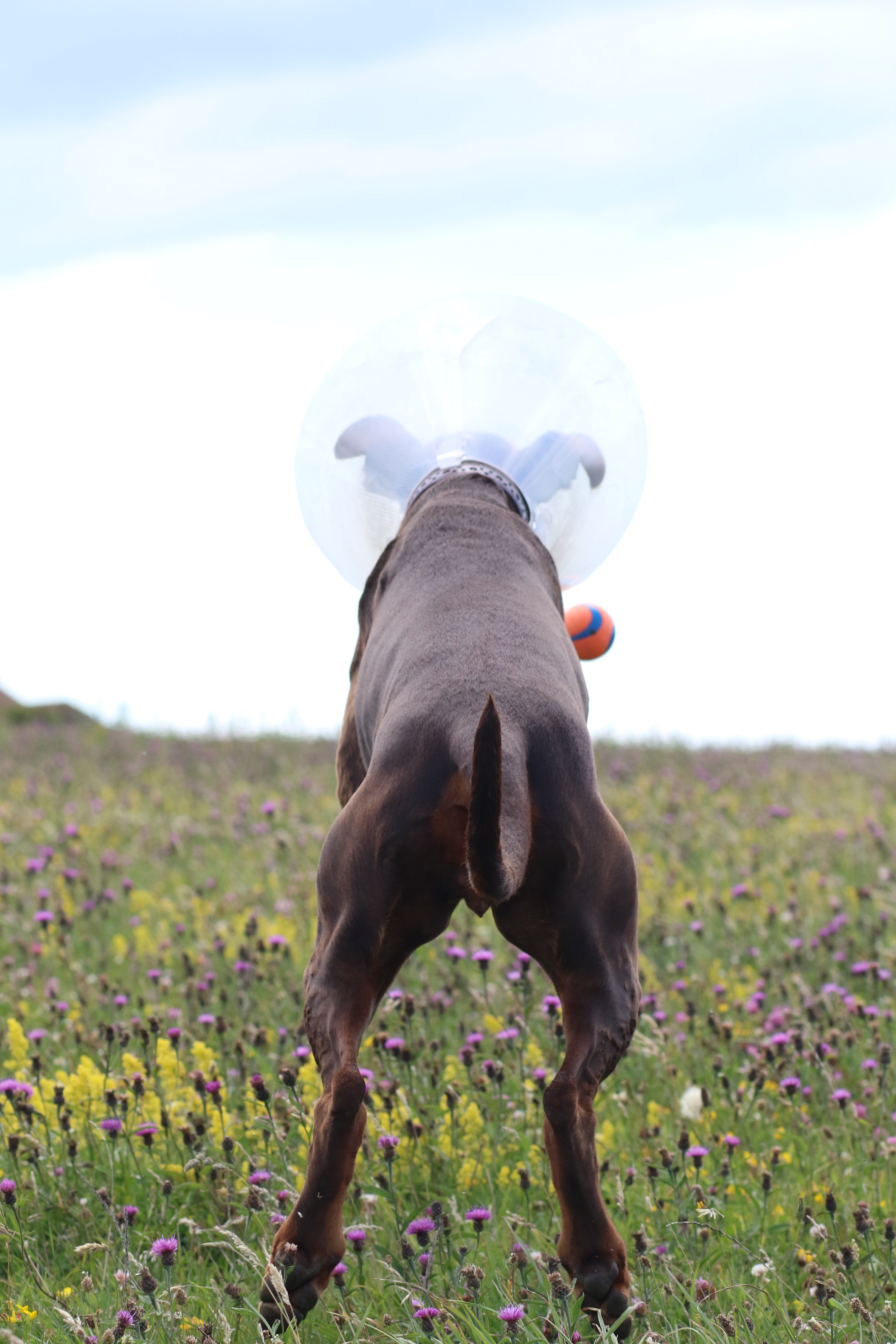What happens when I bring my pet in for surgery?
A nurse will admit your pet in the morning at the time arranged, usually between 8.30 - 9.00am. Please bring in the completed questionnaire as this will save time on admit.
Once admitted we will place an intravenous catheter in their cephalic vein in their foreleg, take bloods if necessary and bandage the catheter in ready to administer their pre-med which we will give 30-45 minutes prior to surgery. This is a sedative with a pain relief injection, it will reduce the amount of anaesthetic required, provide pain relief and relax them.
We will then put them in their kennel, lined with vet-bed, they are given a towel with pet remedy on. ( you are very welcome to bring in one of their blankets or a toy). We provide a hidey hole for cats and small furries. There is also pet remedy diffusers in both our cat and dog wards.
Once the premed has taken effect, the vet will give them the anaesthetic directly into their vein via the catheter, once asleep we will place a tube into their windpipe and then one of our nursing team will connect them to a anaesthetic machine providing both oxygen and inhalant anaesthetic to maintain the anaesthesia. The area will be clipped and cleaned prior to surgery. The nurses will continue to monitor the anaesthetic recording heart rate, breathing pattern, colour of the mucous membranes and their reflexes throughout the procedure.
Once the surgery is completed, they are monitored until they are swallowing and the tube removed.
After their procedure they are placed back in their kennel and are monitored by our nursing team. Once they have recovered, we will offer them some food and water. Once fully recovered we will remove their catheter, check their wounds and take dogs into the garden.
When can my pet come home?
We generally ask owners to phone us between 2.00 - 2.30pm. You will be given a time to collect your pet and will be asked to go to reception first, settle the account and make a post operative appointment with one of our vets or nurses usually 2-3 days after the procedure.
One of our nursing team will explain the post operative care required and will also explain about any medications that maybe required, You will also be given a sheet explaining everything.
 Going home
Going home
Dogs should be lifted into the car if possible, especially after abdominal surgery and secured in a cage or with a car seat harness. Cats should go home in a secure basket.
Once home ensure they are kept inside overnight and kept warm. Dogs can be taken outside on a lead to empty their bladder / bowels.
Exercise should be restricted especially jumping onto furniture and going up and down the stairs for the next 10 days or as advised especially when they have had surgery and have wounds.
There may be a dressing on their foreleg where we have removed the catheter, this can be removed once home.
Unless told otherwise you can offer them something light to eat ( fish or chicken with pasta or rice for dogs) and small amounts of water. Sometimes anaesthetics can make them a little nauseous so please don't worry if they do not eat.
Wounds should be examined twice daily. There may be a little swelling around the incision site, but any discharge and bleeding should be reported to us and if you have any concerns or are unsure what to look for - please do not hesitate to contact us.
It is very important to prevent licking and scratching at their wounds, this can induce infection and delay healing. Use of a pet medical shirt or and a buster collar should be used.
Medications that have been prescribed by the veterinary surgeon, must be given as advised.
As with humans, some medications may not suit your animal, so if you have any concerns, please do not hesitate to contact us before giving them their next dose. Again, like us, some animals can have a lower pain threshold and will therefore sometimes require additional pain relief.
In the days following surgery, we would advise you to use a pain scoring chart to ensure your pet is comfortable and not requiring extra pain relief. Please feel free to ask for one when we are discharging your animal or simply phone / email us for one you can use.
